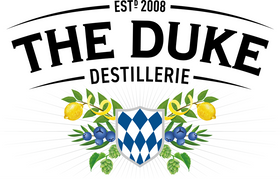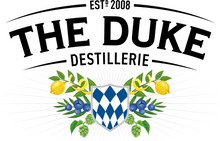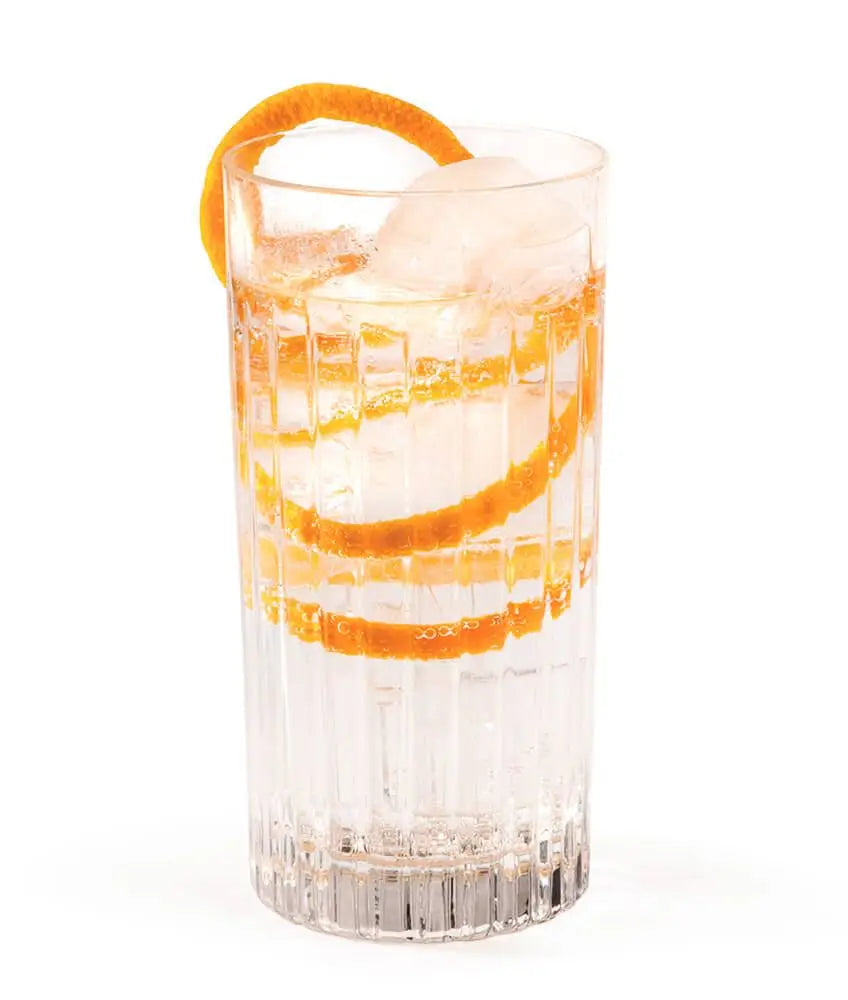Ingredients
5cl THE DUKE Munich Dry Gin
12 cl tonic water
preparation
Pour all ingredients over ice into a highball glass and garnish with an orange zest.
Tip: Of course, a DUKE Tonic can be garnished with many other citrus fruits. However, the aromas of the orange peel go excellently with the botanicals of THE DUKE Gin. The 13 herbs used in the recipe include orange blossom. By adding orange peel to the Gin & Tonic, the drink is perfectly rounded off and tastes fantastic.
5 TIPS FOR THE PERFECT GIN TONIC
Rarely has a topic been discussed so extensively at the bar - the Gin & Tonic shop talk! There's actually not much to say. Here we would like to pass on our how-to to the perfect GinTonic to you.
1. THE GIN
No matter whether classic dry gin, sloe gin or old tom gin. The main ingredient and flavor carrier of a Gin&Tonic is the gin. These vary from mild to sweet floral to real juniper powerhouses. In the case of THE DUKE Gin, it is a classic dry gin, in the production of which only pure organic botanicals are used, 13 in number, without any additives such as sugar. The juniper note is clearly in the foreground, supported by floral and spicy components and rounded off by Bavarian origins: hops and malt
2. IT'S ALL IN THE MIXTURE
The mixing ratio must be right! Not too little gin, not too much tonic water and vice versa. The drink consists of two main ingredients and that's exactly why it's so important that the balance is right. Our recommendation: 4 cl THE DUKE Gin to 10 cl Tonic Water.
3. ICE CREAM, LOTS OF ICE CREAM
Unfortunately, it is far too often underestimated and misunderstood! It is often incorrectly claimed that less ice = less meltwater. It is exactly the opposite. The rule is lots of ice: the more ice cubes in the glass, the less risk that the gin and tonic will be watered down, as the entire drink can cool down really nicely. This means that the dilution in the glass does not occur so quickly or occurs much more slowly.
4. THE TONIC WATER
There are basically two main features of tonic water : 1. The taste: The range of aromas ranges from fresh, citrus-heavy notes to bitter tastes with herbal nuances. 2. The carbonation: Not all tonic water has the same amount of bubbles. There are huge differences here, from slightly fizzy to concentrated liveliness.
Our tip: a strong tonic water also goes well with a strong gin. It is important that the tonic water still allows the gin to have its say and does not drown it out.
5. THE GARNISH
Orange, lemon, cucumber, herbs or many other citrus zests. The garnish should not only look pretty, but it should also round off and support the gin and tonic as a whole. The aim of the garnish should be to emphasize the character of the gin and ideally round it off in such a way that the entire spectrum of flavors comes to the fore. Orange goes best with THE DUKE Gin, or more precisely orange zest. Their essential oils support the floral note of orange blossom, which is included in the recipe.
For the perfect home bar feeling with THE DUKE Gin including glasses and bar utensils, our gin online shop is open to you at any time here on the site.
Have fun mixing it up!


